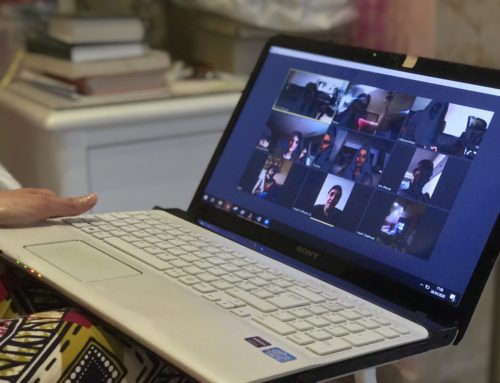 Let’s face it, media relations isn’t near the top of the priority list at most nonprofits.
Let’s face it, media relations isn’t near the top of the priority list at most nonprofits.
Nor should it be.
Nonprofits don’t exist to grab sexy headlines.
They exist to solve problems and make the world a better place — and their resources are best spent on actively working on solve those problems.
But nonprofits do need to get media attention from time to time to help them get more of the resources they need to achieve their missions.
Unfortunately, because media relations is often low on their priority list, nonprofits’ efforts in courting coverage are often ineffective and inefficient.
As a result, they send a rushed news release to the local media when they have an important announcement — or they follow a tired script for producing materials surrounding an important event or award.
But even if your nonprofit doesn’t have a big budget for media relations, it can still execute an effective media relations strategy.
It simply requires some thoughtful planning.
With the New Year upon us, let’s resolve to do that planning now and create a media-relations calendar that will help guide your work for 2017.
Create a Quarterly Calendar
One solution for resource-strapped nonprofits is to focus their attention on executing a handful of high-impact campaigns each year.
And to make those campaigns manageable — and more effective — it’s best to spread them out over time, rather than concentrating all of your efforts at the end of the year or around one signature event.
An aggressive — yet still achievable — goal for small nonprofits is to carry out one well-planned media relations campaign per quarter.
And if they’re executed thoughtfully, these campaigns can be done quite efficiently.
Instead of burning a lot of energy during the year on creating last-minute news releases and making rushed phone calls to reporters, your organization can instead deliberately plan a handful of efforts that are specifically designed to get media coverage that will help your nonprofit raise money or generate awareness for its mission?
This approach would require some up-front work now. But it might actually save you time and energy in the long run.
And it will likely yield much better results.
Build Your Calendar Around Existing Activities
Many nonprofits already have a handful of media-friendly activities on their annual calendar.
Most have an annual fundraising event. Many produce an annual report. Others produce research or bestow awards to celebrate the work of influential donors or volunteers.
Plot these events on a calendar — and spend some time thinking about what your desired outcome is from each of these activities.
Would a feature in the local newspaper about a donor help your nonprofit attract the attention of other supporters?
Would the guest speaker at your annual fundraising luncheon make for a great interview on a local TV newscast?
Let’s say that you know that you’re going to be producing your annual report for release in March and that you are going to be hosting your annual fundraising luncheon in September.
This gives you two events for your quarterly calendar — one in the first quarter and one in the third.
It also leaves you with two more quarters to plan for.
But don’t despair.
For example, you already know that during the fourth quarter, your local media will be scrambling to find great human interest stories for the holidays — so you can begin looking now for an inspiring story about one of your organization’s volunteers.
That leaves the second quarter.
Here’s where you can focus your energy on finding a topic that aligns with one of your organization’s biggest goals for the New Year. Perhaps you’re looking to raise awareness about a program or issue that’s related to your mission. Or maybe you’ve created a new program that is achieving success.
Depending on your goals and needs, you can choose to create a stand-alone media relations effort around telling the story of that campaign or working with your executive director to write an op-ed for the local newspaper that calls attention to a community problem.
Set Reasonable Goals
Once you’ve mapped out your four topics, the next step is to develop a reasonable goal for each of your four campaigns.
Chances are, you’re not going to land on the front page of The New York Times or get featured on The Today Show.
More realistically, your goals will focus on a more targeted outcome.
For your annual report, your campaign might focus on getting your local business journal to do a story about the growth in the amount of corporate support your organization received during the past year.
For the campaign focused on your annual dinner, you might decide that an interview with your guest speaker on a morning radio show two weeks before the event will help drive attendance and donations.
If you can focus on creating some achievable outcomes now for these campaigns, you can concentrate your energy on creating targeted outreach to the outlets you’re most interested in reaching — and you can avoid creating generic releases that aren’t likely to get much pick-up.
Lay the Groundwork
With a clear goal for each of your four campaigns, you can start laying the groundwork for getting coverage now.
Rather than springing a release on the editor of the business journal when your annual report comes out, you can reach out to her now and tell her about the trends you’re seeing in corporate giving and get her input on what type of information she might need to see to do a story.
Instead of waiting until after Thanksgiving to share the story about your inspiring volunteer, you can mention it to reporters throughout the year and plant the seed.
This personal outreach is much easier if you’re thinking ahead about the stories you’d like to see.
To Learn More
If you’re interested in developing a more structured media relations strategy for your nonprofit in 2017, join me on Thursday, Dec. 15, for a special Nonprofit Marketing Guide webinar. I’ll walk you through the process in greater detail — and take your questions live.






